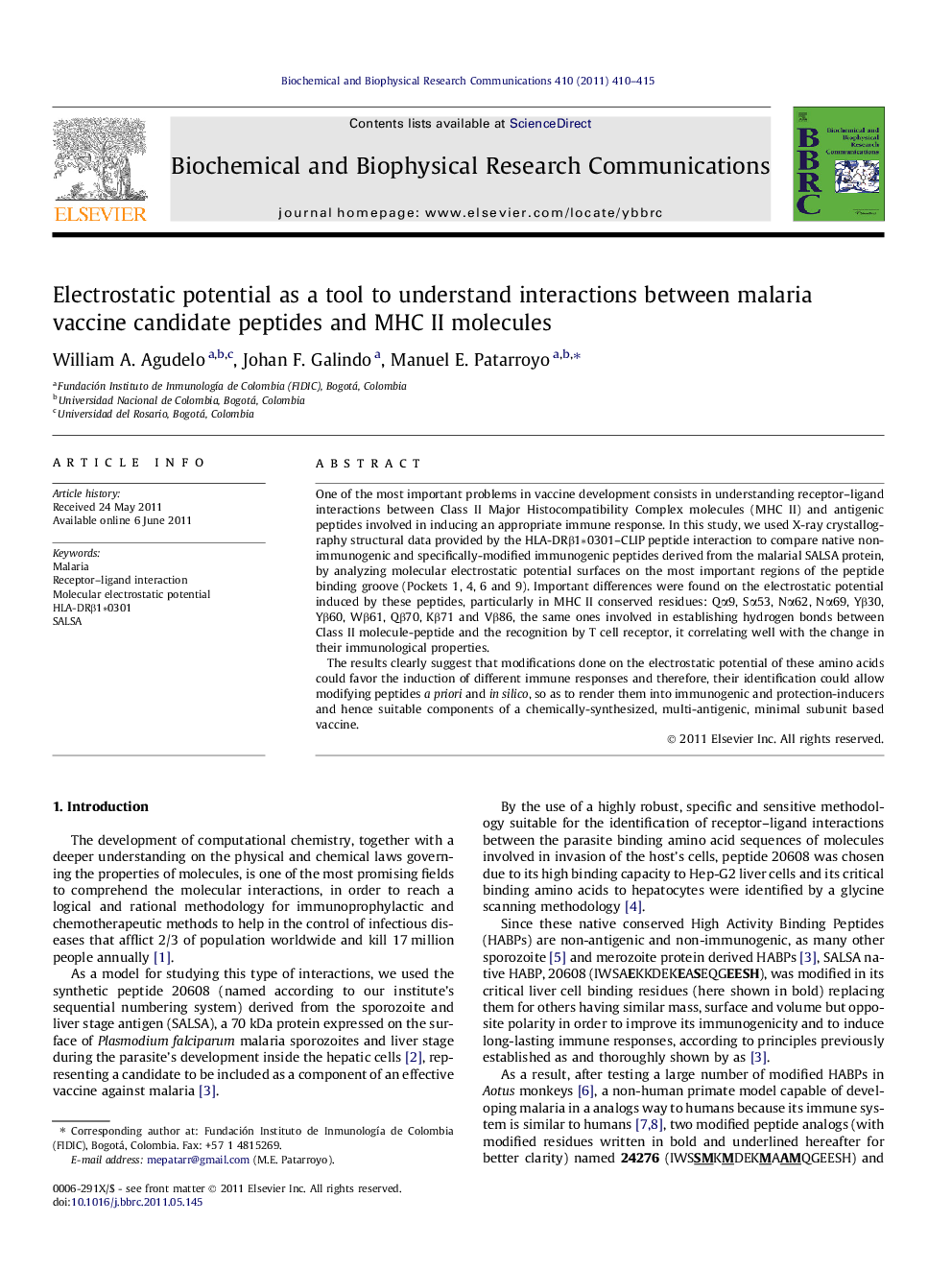| Article ID | Journal | Published Year | Pages | File Type |
|---|---|---|---|---|
| 1930508 | Biochemical and Biophysical Research Communications | 2011 | 6 Pages |
One of the most important problems in vaccine development consists in understanding receptor–ligand interactions between Class II Major Histocompatibility Complex molecules (MHC II) and antigenic peptides involved in inducing an appropriate immune response. In this study, we used X-ray crystallography structural data provided by the HLA-DRβ1*0301–CLIP peptide interaction to compare native non-immunogenic and specifically-modified immunogenic peptides derived from the malarial SALSA protein, by analyzing molecular electrostatic potential surfaces on the most important regions of the peptide binding groove (Pockets 1, 4, 6 and 9). Important differences were found on the electrostatic potential induced by these peptides, particularly in MHC II conserved residues: Qα9, Sα53, Nα62, Nα69, Yβ30, Yβ60, Wβ61, Qβ70, Kβ71 and Vβ86, the same ones involved in establishing hydrogen bonds between Class II molecule-peptide and the recognition by T cell receptor, it correlating well with the change in their immunological properties.The results clearly suggest that modifications done on the electrostatic potential of these amino acids could favor the induction of different immune responses and therefore, their identification could allow modifying peptides a priori and in silico, so as to render them into immunogenic and protection-inducers and hence suitable components of a chemically-synthesized, multi-antigenic, minimal subunit based vaccine.
► We calculated the molecular electrostatic potentials (MEP) of MHC II pockets in the presence of different binding peptides. ► We examine changes in the MEP of MHC II produced by residue modifications on these peptides. ► We observed that MEP changes occur on critical residues of MHC II. ► These changes are correlated with the immunological activity of this peptides.
